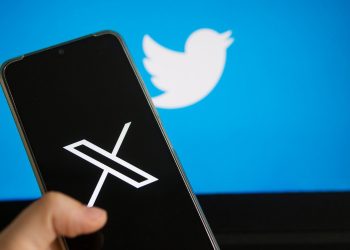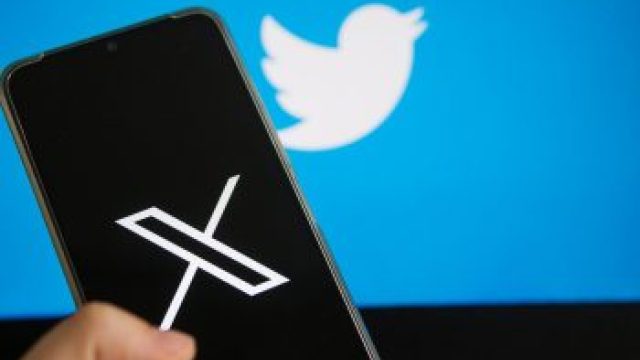Rise & Fall
Discussing Mark Zuckerberg’s latest app, Threads, it’s worth noting its meteoric rise and subsequent decline in user engagement.
Threads was introduced on July 5th, attracting a staggering 2 million sign-ups within its first two hours and amassing a remarkable 100 million users in just five days, setting a new record. Initially, this achievement seemed unbeatable, with ChatGPT as the previous record holder for reaching 100 million users. However, Threads’ fortunes quickly changed.
Despite its rapid ascent, Threads’ active user base dwindled after approximately two months. By the end of July, only 8 million users remained actively engaged.
On July 7th, Threads reached its zenith with 49.3 million users, and users spent an average of 21 minutes on the app. Essentially, Threads burst onto the scene, attracting a surge of sign-ups, but these users didn’t stick around.
The absence of a unique selling proposition deterred users from staying. Many individuals explored Threads as a novelty, only to return to their previous social media platforms like Instagram or Twitter.
It’s worth noting that during the same timeframe, Twitter underwent significant changes, which may have contributed to Threads’ struggle to retain users.
Twitter is Now X

Currently, Twitter has undergone a significant transformation, with its name taking on a new identity as X.
Tweets have evolved into posts, and Retweet is now referred to as Repost. Alongside these changes, X (formerly Twitter) has embarked on a monetization journey, allowing users to earn through the platform.
Moreover, X boasts an impressive user base, surpassing 100 million users. Interestingly, Threads were originally conceived as a challenge to Twitter, but now X has emerged to challenge the concept of Threads.
Related Article
- Pixel 8 & 8 Pro: EVERY SINGLE detail you NEED to know!
- What would happen if Samsung and Apple phones were removed from the world?
Why Mark Made Threads

Now, let’s delve into the rationale behind the introduction of Threads. Mark Zuckerberg, a highly astute figure in the world of social media, boasts a long history of involvement in the field.
To trace the evolution of social media games, we can recall the days of Myspace, which was eventually eclipsed by Orkut. Subsequently, Facebook emerged and Orkut faded into obscurity.
At the zenith of Facebook’s dominance, a new contender emerged: Instagram. Mark Zuckerberg, with his keen foresight, recognized Instagram’s potential as a future industry titan. His response? While at the helm of Facebook, he made the strategic move to acquire Instagram.
But what transpired next? Instagram ascended to become the preeminent platform. When Instagram faced a challenge from Snapchat, Mark Zuckerberg introduced Stories.
And when TikTok posed a threat, Instagram responded with its own short-video format, Reels. In essence, Instagram evolved into a distinct product that outlasted Facebook, now standing as one of the world’s most globally relevant social media platforms.
However, upon deeper consideration, Mark Zuckerberg understands that the lifespan of social media is finite, following a cyclical pattern that eventually leads to decline. He witnessed this phenomenon with Facebook and foresaw a similar fate for Instagram.
Instagram had already reached its pinnacle, and the future foretold a diminishing relevance. It was at this juncture that Mark Zuckerberg shifted his focus toward Twitter and Elon Musk.
Just as Elon Musk expressed interest in acquiring Twitter the previous year, Mark Zuckerberg found this development intriguing. Upon closer examination, the acquisition of Twitter and its subsequent plans must have captivated his attention.
Instagram, while offering an array of features such as photo-sharing, Stories, videos, and Reels, lacked a pivotal element: text-based content.
This meant that for those desiring to share their thoughts, there needed to be a platform where everything could coexist, reminiscent of Facebook but with a contemporary approach.
This is precisely what Twitter brought to the table. To address this gap on Instagram, Mark Zuckerberg introduced Threads, a concept that had been in development while Twitter’s user base was expanding, with advertisers following suit.
Related Article
- Samsung The Next King in Tech Evolution
- iPhone 15 vs iPhone 14 and Older: Navigating the Tech Upgrade
Threads Failed to Kill X
Back then, when threads were first introduced, there was a lot of talk about it being the ultimate solution for X. However, I understood that initial excitement often fades away.
It’s usually best to wait a few months to see how things truly pan out. In the case of threads, for instance, while the user interface is impressive, it’s important to note that the promised web version has yet to be released.
X is a Super App
In contrast, when discussing Twitter in the present day, X has emerged as an app known for its constant influx of new features. Since Elon Musk took ownership of Twitter, over 70 new functionalities have been seamlessly integrated into the platform.
Notably, some of these features come and go, creating a dynamic user experience. One of X’s pioneering moves was the introduction of a novel concept – the sale of verification badges. Prior to this, no other social media platform had ventured into such territory.
Publicly, it was announced that users could subscribe to a monthly plan and, in return, receive a coveted blue verification badge.
This marked a departure from the traditional method where social media platforms set specific criteria for account verification, typically favoring well-known figures such as musicians, celebrities, and journalists. For instance, on YouTube, a verification badge was granted upon reaching 100,000 subscribers.
Elon Musk boldly declared a paradigm shift – abolishing existing criteria and offering the verification badge alongside access to premium features at a fixed rate.
This innovative concept proved highly successful, prompting Meta to replicate it as “Meta Verified,” allowing users to obtain a blue verification badge on Instagram.
But the innovation didn’t stop there; Twitter continued to introduce remarkable features. Notably, they implemented a revenue-sharing program, although the sustainability of this initiative remains uncertain, given X’s financial losses.
Moreover, X positioned itself as a social media platform where news spreads rapidly, even fake news. To address this issue, a valuable solution was implemented: community notes at the bottom of your feed.
These notes serve as a means to counteract fake news by providing explanations and verifiable links that confirm or debunk the authenticity of photos, videos, or news articles. This feature has proven highly beneficial in curbing the spread of misinformation.
Furthermore, X expanded its user experience by introducing vertical videos and a “reels” section similar to Instagram. In summary, X is undeniably reshaping the landscape of social media by setting new trends and constantly enhancing its offerings.
Threads vs X
Twitter has been steadily improving itself day by day, while Thread’s user base has remained stagnant, suggesting a rushed product release to compete with Twitter.
However, Threads has failed to achieve the impact it intended. On the other hand, Twitter continues to expand, and Elon Musk has plans to create a comprehensive super app that encompasses features like monetization, community-building, live streaming, photo and video sharing, and even encrypted messaging.
Potential future additions include video and voice calls, potentially rendering other apps obsolete. There are even rumors of introducing a proprietary payment system.
This app seeks to consolidate the functions of various other apps, whereas Meta’s goal is to establish Thread as a new social media platform.
However, X hasn’t gained the popularity it should have, with Instagram maintaining its dominance. Nevertheless, we may witness Instagram’s decline in the next 3-4 years, making it interesting to observe how this situation unfolds.
The next 4-5 years in the social media landscape promise exciting developments, and I’m also curious about potential competitors for YouTube. Only time will tell.
By the way, which app do you use the most: YouTube, Twitter (X), Threads, or Instagram? Please share your preference in the comments below.
Thanks for watching and if you enjoyed this video, don’t forget to give it a thumbs up and share
it with your friends. Stay tuned for more exciting tech videos. See you in the next one!

